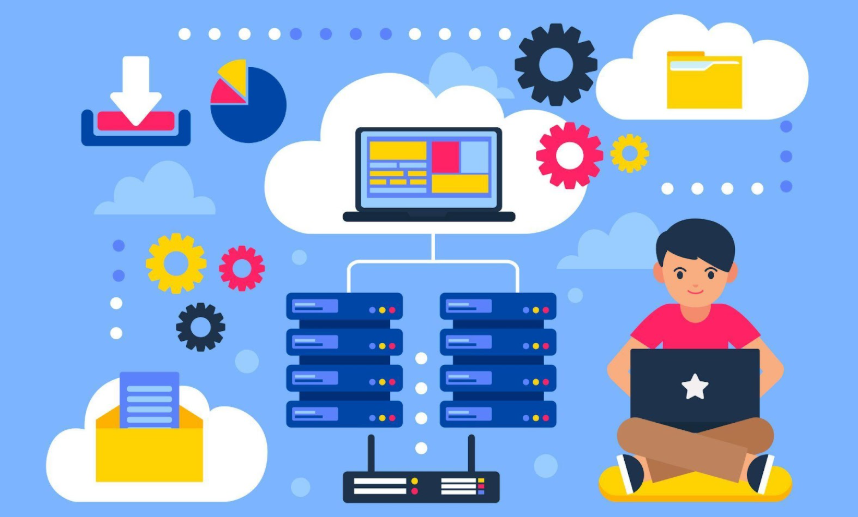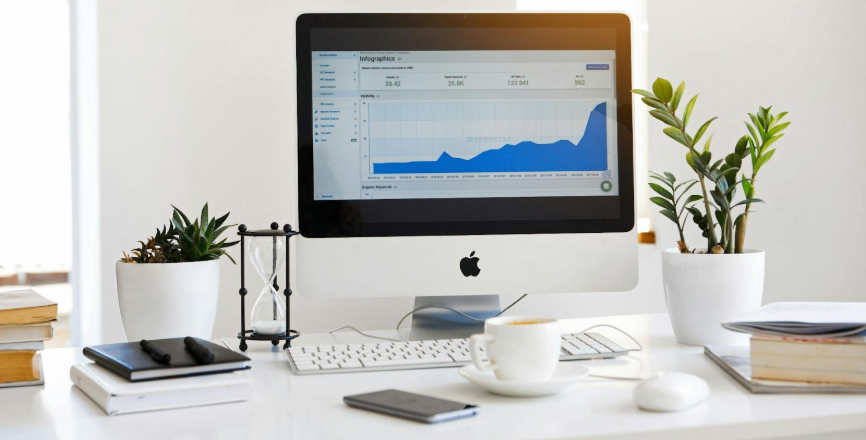WGU D075 OA Study Guide I - 2025 | Understanding IoT Components, RAM, and SSD Functions📖
Technology is at the heart of modern life, shaping how we connect, work, and live. From the Internet of Things that allows the connectivity of smart devices to RAM and SSD, fundamental to the function of most computers, grasping these is central – not just to computer owls but for anyone in today’s digital age. This article is particularly valuable for those exploring concepts in WGU D075 OA.
This article explores two essential technology concepts that are fundamental to modern computing and connectivity:
- Seven Main Parts of IoT: The Internet of Things (IoT) consists of interconnected devices that collect and exchange data. Its seven main components include sensors, connectivity, data processing, user interface, cloud computing, security, and actuators, each playing a crucial role in making IoT systems efficient and functional.
- Types of Memory (Especially RAM and SSD): Memory is a vital part of computing, influencing speed and performance. RAM (Random Access Memory) is volatile memory that temporarily stores data for quick access, while SSD (Solid State Drive) is non-volatile storage that retains data even when power is off, offering faster performance than traditional hard drives.
Our goal is simple: to make these concepts clearly understandable for beginners and generally applicable. Whether you are learning about these concepts in class, such as WGU’s D075 module, or are interested in the functioning of technology, this guide will distill theorists’ concepts into accessible, easily digestible content.
How to Use This Guide for the WGU D075 OA Exam? 📖
The D075 Information Technology Management Essentials OA exam at WGU evaluates your understanding of information technology concepts, networking systems, and data storage solutions. This guide simplifies the key concepts of the seven main parts of IoT and types of memory (especially RAM and SSD) to help you grasp the topics tested in the exam.
We also provide exam-style questions and practical applications to ensure you’re fully prepared for the questions on the WGU D075 OA exam.

Part 1: Seven Main Parts of IoT For D075 OA📝
The Internet of Things (IoT) might sound complex, but at its core, it’s about connecting devices to the Internet so they can share data and make smart decisions. Think of it like a team where every member plays a role to make things work seamlessly. To break it down, IoT has seven main parts. Let’s explore these components one by one in a way that’s easy to understand.
1. Devices and Sensors: The Data Collectors
Devices and sensors are like the eyes and ears of the IoT. They’re the gadgets that gather information from the environment. For example:
- A temperature sensor tells us how hot or cold it is.
- A smartwatch tracks your heart rate and steps.
- A motion detector watches for movement.
These devices collect raw data, such as numbers or signals, and send it off to the next stage. Without devices and sensors, IoT wouldn’t even get started because there’d be no data to work with!
2. Connectivity: The Communication Bridge
Once the sensors collect data, it needs a way to travel. This is where connectivity comes in. Imagine you have a letter you want to send to a friend; you’ll need a postal service, right? Similarly, IoT uses various communication technologies to send data, such as:
- Wi-Fi: Good for home devices like smart speakers.
- Bluetooth: Ideal for short distances, like connecting your phone to headphones.
- Cellular Networks (4G/5G): Perfect for devices on the move, like GPS trackers in cars.
- Zigbee or LoRa: Special networks for low-energy devices like smart lightbulbs.
Connectivity ensures that the data from sensors reaches the system that processes it. It’s the backbone that keeps everything linked.
3. Data Processing: Making Sense of Information
Imagine you’re looking at a puzzle. The pieces by themselves don’t mean much until you put them together to see the big picture. That’s exactly what data processing does.
- It takes the raw data from sensors (like temperature readings or step counts).
- Analyzes and organizes it.
- Decides what actions need to be taken.
For example, if your smart thermostat notices that it’s too hot inside, the system processes that data and decides to turn on the air conditioning. This processing can happen locally on the device (edge computing) or in the cloud, depending on how complex the task is.
4. User Interface: The Control Panel
The user interface is the part of IoT you actually see and interact with. It’s like the dashboard of a car, where you can check the speed, fuel level, or even change the radio station. With IoT, the user interface might be:
- A mobile app: Letting you adjust your home’s lighting or check the feed from a security camera.
- A web interface: Allowing you to monitor data on a computer screen.
- Voice commands: Using smart assistants like Alexa or Siri.
A well-designed interface makes it easy for users to control IoT systems and see what’s going on.
5. Actuators: The Movers and Shakers
If sensors are the eyes and ears, actuators are the hands and feet of IoT. They carry out actions based on processed data. For example:
- In a smart irrigation system, an actuator opens the valve to water plants when the soil is too dry.
- In a smart home, actuators lock the doors or adjust the blinds automatically.
These are the parts that make IoT systems truly interactive by physically doing something in response to the data they’ve analyzed.
6. Cloud Computing: The Brain in the Sky
Now let’s talk about cloud computing, the powerhouse behind many IoT systems. Think of the cloud as a giant storage room and super-smart processor combined. Here’s what it does:
- Stores all the data collected by IoT devices.
- Analyzes the data using tools like artificial intelligence (AI) to identify trends or patterns.
- Allows you to access your IoT system from anywhere in the world.
For instance, if you’re on vacation, you can still check your home security cameras through a cloud-based app. The cloud makes IoT systems scalable, meaning they can handle lots of devices and data without slowing down.
7. Security: The Bodyguard
Security in IoT is absolutely critical because these systems deal with sensitive data. Imagine if someone hacked into your smart home system—it could be disastrous. That’s why IoT systems use strong security measures like:
- Encryption: Scrambling data so only authorized people can read it.
- Authentication: Ensuring only the right users can access devices (like needing a password or fingerprint).
- Updates: Regularly fixing vulnerabilities to keep the system safe.
Good security keeps everything running smoothly and protects your data from prying eyes.
Bringing It All Together: How the Seven Parts Work in Harmony
Let’s see how these seven parts collaborate in a real-world example. Imagine you have a smart home system that controls your heating:
- Sensors measure the temperature inside your home.
- Connectivity sends this data to the processing system.
- Data Processing analyzes the temperature and decides it’s too cold.
- The user interface lets you confirm or customize the heating schedule.
- Actuators turn on the heater to warm up your house.
- Cloud Computing stores your preferences and learns your habits over time.
- Security ensures that no one but you can access your system.
The result? A warm home without you having to lift a finger!
Why Understanding These Parts Matter For D075 OA
Learning about these seven components gives you a clear picture of how IoT systems function. Whether it’s making homes smarter, improving healthcare, or optimizing industries, IoT is revolutionizing the way we interact with technology. By understanding these basics, you’ll be better equipped to tackle more complex topics in the WGU D075 module.
So next time you hear about IoT, remember—it’s not magic; it’s just these seven parts working together to make life easier!
Part 2: Functions of RAM and SSD For D075 OA📝
If you’ve ever wondered what makes your computer fast or why some devices take ages to load, you’ve probably encountered two key components: RAM (Random Access Memory) and SSD (Solid State Drive). These two pieces of hardware are like the brain and long-term memory of your computer. They play distinct yet complementary roles to ensure smooth performance and storage. Let’s dive into the fascinating world of RAM and SSD in an easy-to-understand way, especially for those tackling WGU D075 OA questions.
RAM: The Quick Thinker of Your Computer

Imagine your computer is like a busy office. RAM is the office desk where all the current tasks, papers, and tools are laid out. It’s where everything actively happening gets organized and processed. The bigger the desk (more RAM), the more tasks you can work on at once without creating a mess.
So, what does RAM really do?
Temporary Storage for Active Tasks
RAM offers a place to store additional data during processing. Contrary to other types of storage, RAM is not designed to have all the files permanently stored on your computer, it is supposed to facilitate your software’s work for what you are doing at the moment. For instance, when you are writing a document, browsing the internet, or even playing a game all that data is stored in the RAM so your computer can easily retrieve it. However, as soon as you turn off your device, this data disappears because RAM is a type of temporary, or ‘volatile’ memory.
Speed Boost for Your System
The magic of RAM lies in its speed. Unlike your hard drive or SSD, which stores data for the long haul, RAM is lightning-fast. It lets your computer access the information it needs without any delay. This is why apps load faster and websites open smoothly when your device has enough RAM.
Helping with Multitasking
Have you ever attempted to open more than one app or have multiple tabs on your browsers active at once? If you experience slowing of your computer, you probably have a low RAM space. With more RAM, your computer can function more programs simultaneously, and lag between switching from one operation to the next.
Enhancing Overall Performance
RAM is a hidden ace for your computer or any other computer system. That is why anyone who is into gaming, video editing, or anything that needs heavy usage of the operating system would benefit from having more RAM. It does make a discernible difference even for typical applications in how smooth your computer feels.
SSD: The Long-Term Memory of Your Computer

If RAM is the office desk, the SSD is the filing cabinet. It stores everything you need permanently, like your documents, photos, apps, and the operating system itself. Unlike RAM, SSDs don’t lose data when the power is off. They’re there to ensure your computer remembers everything you’ve saved, even after you shut it down.
Persistent Data Storage
In general, SSDs are made to store information for a considerable time. This ranges from all your documents, the system that gets the computer running, right down to every application you have ever added. It could be images you prefer or a huge game, everything is secure with the SSD and can be accessed when desired.
Blazing Fast Speeds
Anyone who has migrated from a conventional hard disk drive (HDD) to an SSD will likely have experienced this powerful performance boost. This is because, with SSDs, your computer boots in a few seconds, Apps start almost right away and your large files open smoothly. This speed is not just good; it redesigns the way you interact with your gadget.
Durable and Reliable
SSDs also have some benefits: For instance, they tend to be much more robust than hard drives. Hard drives have components that can wear out or fail, or better still if the entire hard drive is dropped. SSDs, however, are non-mechanized devices thus they can’t be affected by physical impacts and mechanically induced destructions.
Energy Efficiency
SSDs are also very energy friendly given the rate at which data is stored and accessed. It is more energy efficient than traditional hard drives thus it is better for laptops since they do not need a lot of power to operate or for desktops since they help lower the amount of energy used. Plus, they create less heat and this is over-arching important since it will not make the device hot.
Better Multitasking
While RAM takes care of active tasks, SSDs also play a role in multitasking by quickly retrieving and storing data as needed. This makes them a perfect partner to RAM, ensuring your computer remains responsive even during heavy usage.
Comparing RAM and SSD: What’s the Difference?
To make things simpler, here’s a side-by-side comparison of RAM and SSD:
Feature | RAM | SSD |
|---|---|---|
Function | Temporary, active memory for tasks | Long-term storage for files and apps |
Data Retention | Volatile: Data is lost when powered off | Non-volatile: Data stays even when off |
Speed | Ultra-fast for quick access | Fast, but slower than RAM |
Capacity | Ranges from 4GB to 64GB or more | Ranges from 128GB to several terabytes |
Usage | Multitasking and active processes | Storing operating systems and files |
Upgrade Impact | Enhances multitasking performance | Speeds up boot and load times |
Why Understanding RAM and SSD Matters For D075 OA
While for the WGU D075 students such knowledge is useful in order to answer the exams, they comprehend the essence of today’s digital technologies. This knowledge assists you for instance if you are planning to purchase a new laptop or if you are solving a system.
Here’s a quick takeaway:
- RAM is all about speed and multitasking.
- SSD is about capacity and durability.
Together, they make your device fast, efficient, and reliable.
Tired of reading blog articles?
Let’s Watch Our Free WGU D075 Practice Questions Video Below!

Wrapping Up Insights for WGU D075 OA Success📖
Working in technology, especially when preparing for modules like WGU D075 OA or tackling D075 OA questions, becomes less complicated if you understand how the world is constructed. Of the seven foundational components of IoT that provide the means of acquiring, disseminating, and applying collected data, to the functionalities of RAM and SSD that are responsible for your computer’s efficiency, such elements function collectively in delivering the smooth interfaced experiences that we often seem to take for granted.
Smart devices progressively are introduced to our lives, allowing people to control their surroundings with the help of IoT. RAM and SSD are what computing is built upon, and make sure our tools are snappy, fast, and up to the task of today’s workloads.
So now, every time you learn or master one of these basics—whether for personal growth or to excel in WGU D075 OA—you’re not just understanding how technology functions; you’re enabling yourself to make sound decisions about their usage and the future advancements of technology. With this insight, you are prepared to face the constant change of environment that technology brings today.






